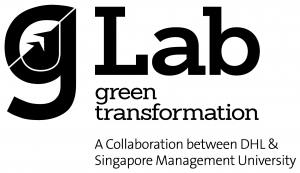SMU-DHL GREEN TRANSFORMATION LAB MARKS ITS SECOND YEAR!

In May 2013, the global logistics company DHL and SMU jointly launched the DHL-SMU Green Transformation Lab (GTL). Hosted at SMU and funded by DHL, the goal of the lab was to accelerate the evolution of sustainable logistics across the Asia-Pacific region. GTL was tasked to create innovative solutions to help organisations transform their businesses towards sustainable green growth, and drive beneficial change in supply chains across the region through education, research and best practice development.
The initiative built on the complementary skills and resources of SMU and DHL. At GTL’s launch event, SMU President Professor Arnoud De Meyer explained, “We possess the knowledge and are able to provide a conducive environment for generating ideas and solutions that are vendor-neutral and interdisciplinary to help companies steer a green transformation of their businesses. SMU’s strength in information systems, operations and risk management, business strategies, law, economics and social sciences, allied to DHL’s global leadership in sustainable logistics, is a powerful combination.”
The First Year - Building Collaborative Capabilities
Within a year, GTL has made remarkable progress in pursuit of its goals. Drawing on the expertise of the Schools of Information Systems, Social Sciences and Lee Kong Chian School of Business, SMU generates interdisciplinary solutions by bringing in technology know-how, innovative ideas and analytics capabilities to the partnership. For its part, DHL not only provides significant funding for two years, but also introduces real-world challenges associated with existing and future projects; domain expertise; thought leadership; as well as business and customer networks. Below is a sketch of four of the many projects that have been successfully initiated by GTL over the last year:
1. Carbon Dashboard 2.0
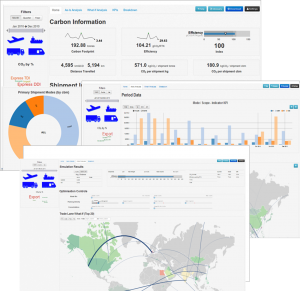
Immediately after its launch, GTL embarked on a multidisciplinary project involving SMU faculty members and students from the School of Information Systems together with DHL logistics experts to overhaul the existing DHL’s Carbon Dashboard – an online tool that measures carbon emissions along a manufacturer’s supply chain and relates it to other supply chain management parameters. GTL not only gave the application a more user-friendly interface, but also added new analytical features to pinpoint graphically and exactly where fuel was used and how emissions were generated.
2. Carbon Data Robot
The Carbon Data Robot is a step towards automating the cleansing and integration of data from the systems of various logistics service providers. This offers a common data model for the consistent computation of carbon emissions, which could eventually be visualised for the entire supply chain on the Carbon Dashboard 2.0.
3. iSCCM: Integrated Supply Chain and Carbon Modelling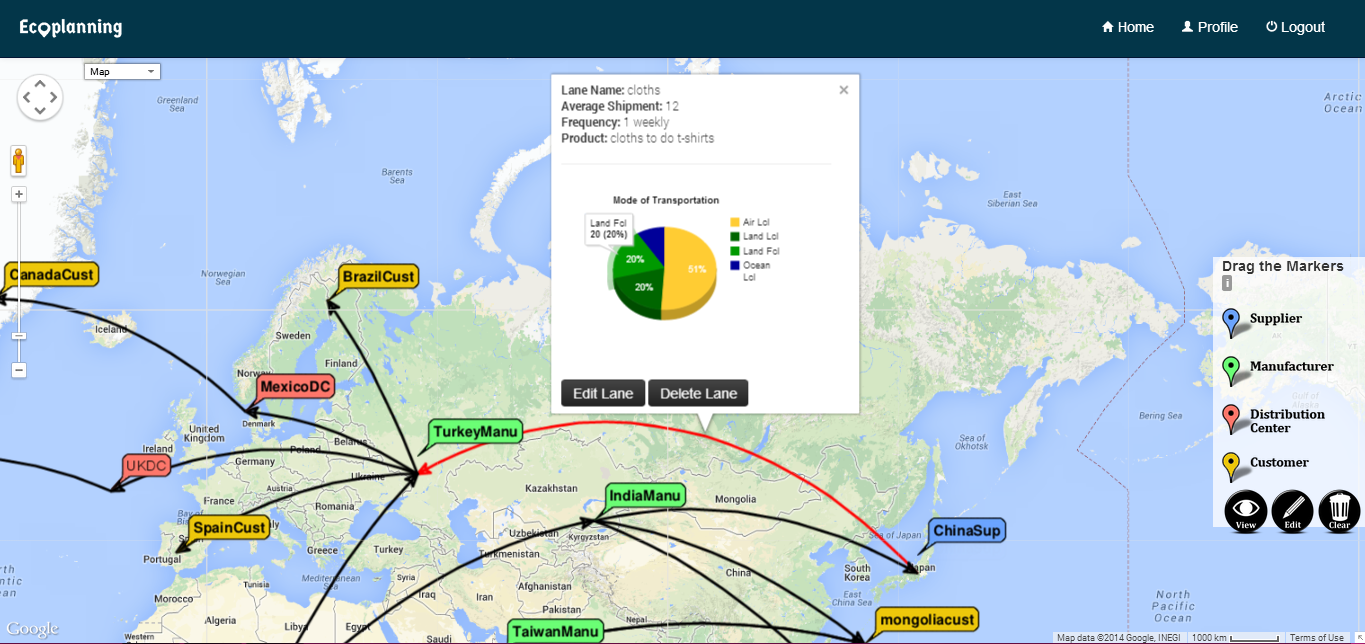
Whilst the Carbon Dashboard 2.0 and Carbon Data Robot are tools that support carbon footprint analysis of a supply chain after transportation has been completed, GTL also designed an application that supports customers’ supply chain management planning. The iSCCM application, first prototype developed as a final year project by the undergraduates in School of Information Systems, allows companies to plan their supply chain networks visually, and evaluate key metrics such as costs, carbon emission, and the service level (time) of transporting raw materials, work-in-progress, final products or by-products in their networks. This tool also generates optional what-if scenarios and indicates the impact of each scenario based on the key metrics. This enables customers to design a more carbon-efficient supply chain, and to analyse the effect of making changes to their supply chain before implementation.
4. Shipping Container Load Optimisation

The fill rate of ocean freight containers is not always optimal, with capacity not being fully used. However, filling the containers adds very little to the amount of fuel used and carbon generated in their transportation. Therefore, optimising the packing density of ocean freight containers reduces the carbon footprint of each unit of a product shipped. To address this, GTL produced a planning tool that optimizes the carbon footprint by suggesting a combination of appropriate container size(s) based on shipment volume and the possibility of consolidating shipments within the same source country.
5. Transforming Minds: Education and Outreach
The Second Year - Growth and industry outreach
In the second year, GTL continues to grow and embarked on various projects that engaged with DHL business units or external collaborators on real business issues. GTL has also contributed to DHL’s winning of two business awards on sustainability. Below is a sketch of four of the many projects that have been successfully initiated by GTL in its second year:
1. Energy Certificate

DHL’s Online Energy Certificate platform equipped with What-If analysison energy efficiency indicators and Warehouse Portfolios.The Online Energy Certificate is a self-service platform that provides interactive updates on warehouse data and measures the energy efficiency of a warehouse operation by normalising the energy consumption against a set of ‘benchmark’ data. The pilot was done with a DHL’s customers with multiple warehouses in China. This tool enables DHL customers to better compare energy consumptions across their sites and also track the consumptions across the years and support decision-making with what-if analysis.
2. Road King
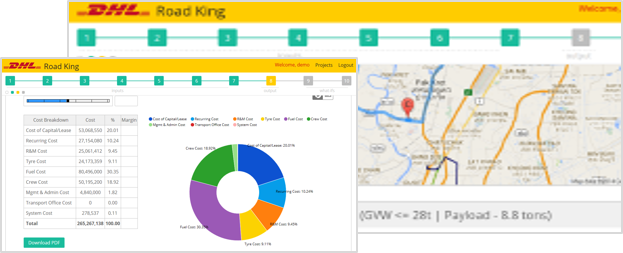
Immediately after its launch, GTL embarked on a multidisciplinary project involving SMU faculty members and students from the School of Information Systems together with DHL logistics experts to overhaul the existing DHL’s Carbon Dashboard – an online tool that measures carbon emissions along a manufacturer’s supply chain and relates it to other supply chain management parameters. GTL not only gave the application a more user-friendly interface, but also added new analytical features to pinpoint graphically and exactly where fuel was used and how emissions were generated.
3. Maritime Energy Evaluation Framework
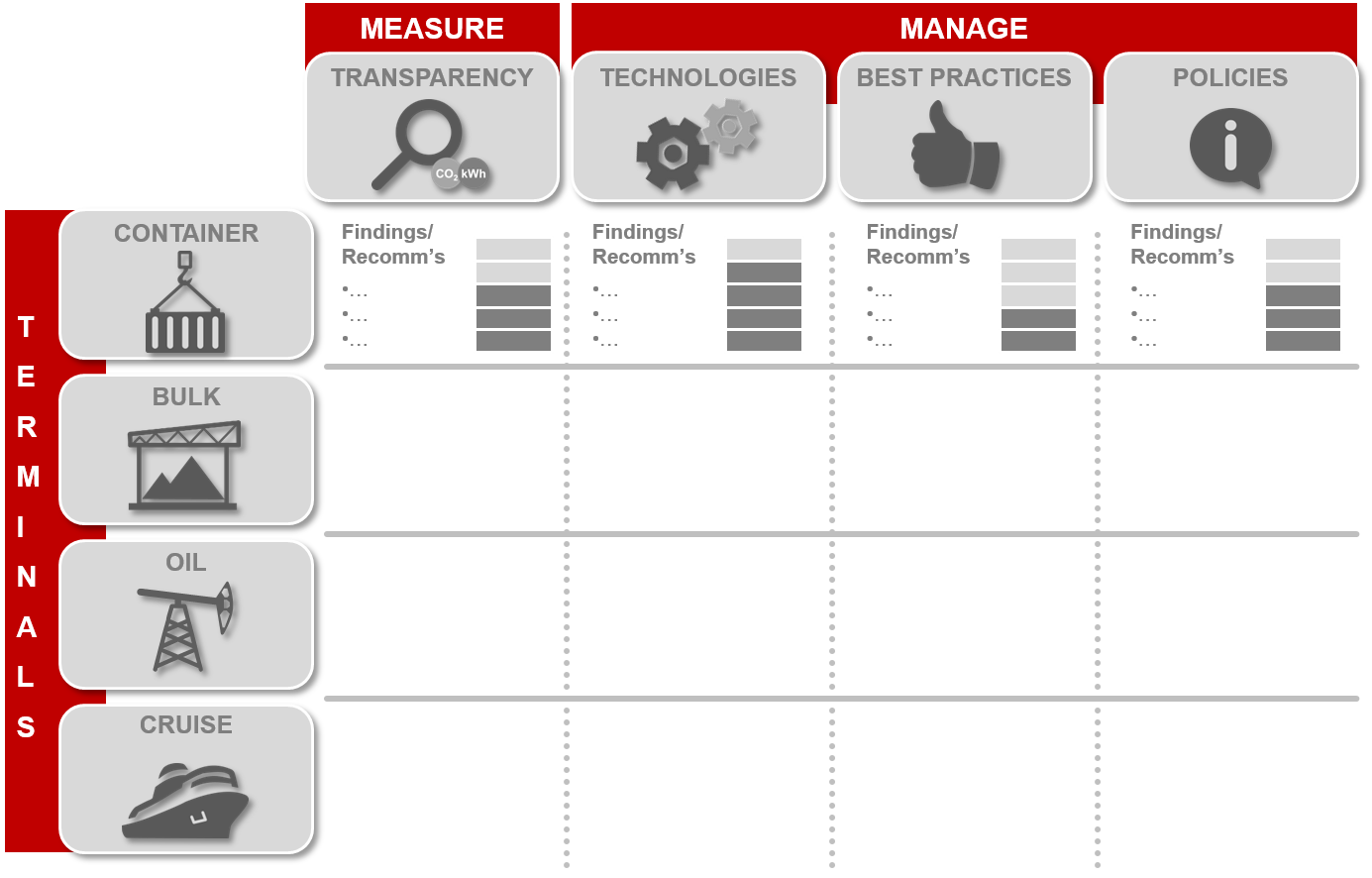
With the interest of moving towards Clean and Green Port of the future in Singapore, MPA and SMU jointly research on the latest developments and sustainability initiatives at world’s leading ports focusing on energy management on the land-side terminal operations. Environmental sustainability at ports has been getting more attention from port operators and port regulators. Air quality in the port areas, GHG emissions associated with operations, energy sources – are some issues that are continuously monitored and urgently addressed at leading ports across the world. This research designs an evaluation framework that defines key parameters which will be used for capturing energy sustainability efforts based on processes at the terminals. The four types of terminals which are in scope include oil, container, bulk and cruise terminals. The framework aims at covering transparency measurements, best practices, technologies and policies that allow business units in terminal operators to be accountable for their energy consumption. With this approach, guidelines, policies and targets can be set to help Singapore’s maritime operations towards sustainable green growth.
4. Transforming Minds: Education and Outreach
In the second year, GTL continues to reach out to industry to create more awareness for sustainability solutions. In November 2014, GTL organized the Urban Logistics: E-commerce and Sustainability Symposium which attracted 70 industry executives from local and multinational companies, government agencies and academia. With respect to education, in two years, the lab has worked with more than 150 students in SMU on the various projects.
A Greener Future
Envisioning the future direction of the lab, GTL’s Director Stephan Schablinski, said that the growing scarcity of energy resources and the simultaneous increase in demand pose huge challenges for every industry. As an integral component of all other industries, logistics can help reduce their dependence on natural resources in order to keep them performing reliably and economically in the future. “Logistics should be viewed as part of the solution”, said Mr Schablinski. Academic Director of GTL Tan Kar Way, who is also the Assistant Professor of Information Systems (Practice) at SMU’s School of Information Systems, elaborated: “Moving forward, GTL will continue to innovate, develop tools and build capabilities that address the sustainability challenges faced in businesses today,” she said. “These challenges are great opportunities to bridge practice to education and research. With DHL’s domain expertise and SMU’s scholastic leadership and technology know-how, we look forward to help more companies transform their businesses towards sustainable green growth.”
